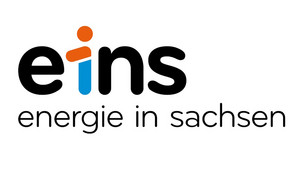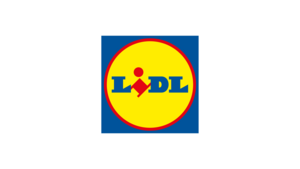Frequently asked questions
Here you will find answers to frequently asked questions about the European Capital of Culture Chemnitz 2025.
The European Union has been awarding the title of European Capital of Culture since 1985 in order to emphasise the richness, diversity and commonalities of cultural heritage in Europe and also to provide sustainable impetus for urban and regional development. To date, 71 cities have held the title. Athens was the first European Capital of Culture. Cultural events such as exhibitions, theatre performances and participatory activities are organised during the Capital of Culture year. Numerous projects with a European dimension are also organised. The aim is to promote the international exchange of culture and citizens.
The path to the European Capital of Culture year is a multi-year process. If a city wants to become European Capital of Culture, it can apply for the title with a cultural programme. This programme is evaluated by independent experts from the cultural sector. The draft programme can be found in the so-called Bidbook II (application book). Chemnitz, together with the Capital of Culture Region, which consists of 38 municipalities from Central Saxony, the Ore Mountains and Zwickau, was awarded the title on 28 October 2020. With the motto C the Unseen, the city is focussing on the unseen: unseen places and biographies, the unseen talents in each individual. As a city with great tradition and upheaval, but also as a place of makers and new beginnings, Chemnitz prevailed over numerous applicants. Culture, art and civic participation sustainably strengthen social cohesion as well as the relationship between the city and the surrounding area. The bid also had a clear political stance that advocated cosmopolitanism and a commitment from the centre of society.
The motto C the Unseen is an invitation to look and discover, to show yourself and become visible. That is why this invitation applies to local people as well as guests from outside. C the Unseen means that the unseen becomes visible - hidden potential, undiscovered places and previously unknown makers.
The motto can be interpreted in two ways: "Chemnitz - the unseen [city]", which is moving into the spotlight with the title of European Capital of Culture and becoming visible throughout Europe. On the other hand, it means "seeing the unseen". This means, among other things, people who feel recognised and proudly show themselves and their city to guests.
Diversity, co-operation, respect, tolerance, openness and internationality - you can find detailed information on these in our mission statement.
Capital of Culture is a process. To be awarded this title, cities must present a coherent concept of how they will make culture the driving force behind urban development and how they will become a European city. This is not about a 365-day festival, but about a sustainable strategy with a one-year interim high.
In 2025, an incredible number of events and participatory projects will take place in Chemnitz and the Capital of Culture Region. These include festivals, conferences, exhibitions, concerts, performances as well as sports and maker events. In addition to the programme based on the application book, many other stakeholders in Chemnitz and the cultural region will be organising events to make the entire region even more attractive for visitors.
The Slovenian-Italian border town of Nova Gorica / Gorizia shares the title with Chemnitz. Its motto is GO borderless. There is already a close exchange between the twin towns. Stakeholders from Chemnitz have visited Nova Gorica to network there and vice versa. From the exchange of experiences at team level to the implementation of joint projects in the cultural programme, there is intensive cooperation.
Chemnitz shares the title of European Capital of Culture 2025 with 38 municipalities from Central Saxony, the Ore Mountains and Zwickau. The PURPLE PATH art and sculpture trail is the largest project in the Capital of Culture region. With works by national and international artists, an exhibition of contemporary art is being created in rural public spaces. It creates a symbolic link between the municipalities, from the countryside to the city and from the past characterised by mining to the present. Initiated by Chemnitz 2025, eight so-called maker hubs are also being created in the region. These are places for creative exchange, meeting and doing things together. They all have a different focus, from culinary art to textile art and urban art.
Chemnitz 2025 gGmbH is a municipal subsidiary of the City of Chemnitz and has the task of implementing the programme from the Bid Book II, with which the city was ultimately awarded the title. Chemnitz 2025 gGmbH also networks the many project participants with each other and brings them together with national and international partners. In addition to the five main projects that Chemnitz 2025 gGmbH is implementing as its own projects, numerous other ideas and projects are also being realised. These include micro-projects, Team Generation and the coordination of the volunteer programme. Regular events have been taking place since 2022. The highlight will take place in 2025, when all projects will come to fruition and countless other events will take place in Chemnitz and the region.
In addition to the five main projects that Chemnitz 2025 gGmbH is realising as its own projects, over 70 other projects were outlined in Bidbook II. These were checked for feasibility by the end of 2023. In addition, further project ideas were submitted by civil society players through public tenders in 2023. Further projects are being developed with children, young people and older people, with partners in Poland and the Czech Republic, in the fields of dance, music, singing, painting and street art on a popular basis for the entire urban community.
In addition, micro-projects are intended to provide impetus to realise own cultural formats or encounters in the city and the cultural region. Whether a theatre project, music event, creative workshop or themed podium - the broad urban community is called upon to create new forms of communication and social interaction.
Around two million visitors are expected throughout the year. This is an estimate based on the experience of other European Capitals of Culture of a similar size to Chemnitz in recent years. There will be occasions when particularly large numbers of people are expected and there is also an interested group of tourists who visit the European Capitals of Culture every year. The majority of guests are day tourists travelling from the surrounding area.
The aim of the European Capital of Culture is to visualise the diversity of living realities in Europe, to promote mutual understanding and a sense of common European belonging and to provide sustainable impetus for urban and regional development. The Legacy Plan (the legacy of the Capital of Culture project) should not only define strategic objectives, but also contain concrete measures as to whether and how the projects launched during the Capital of Culture year can be continued, expanded or new ones initiated. In accordance with the requirements of the European Commission, various aspects are to be taken into account, including the promotion of the cultural and creative sectors as well as long-term links with the economic and social sectors. The plan is set to run for ten years and covers the period from 2026 to 2035.
The EU Commission recommends taking sustainability into account at an early stage of preparation. As the years 2024 and 2025 are inevitably very labour-intensive, legacy planning cannot wait until the end of the title year. The legacy process was therefore launched as part of the Visions of Europe conference in Chemnitz in April 2024. The legacy plan will be developed and presented over the following ten months. The aim is to reveal the expectations, experiences and challenges of successfully implementing the legacy.
The term covers infrastructure projects that are linked to the Chemnitz 2025 programme - not just as future event venues, but as places whose transformation will have a lasting impact on the city community. A total of 30 locations in Chemnitz are to be transformed in this way. These include, for example, the Hartmannfabrik, the Garage Campus, the Stadtwirtschaft and the Neighbourhood park on the Pleißenbach. More information can be found here.
The Hartmannfabrik is the visitor and information centre for Chemnitz 2025, where current information material about the European Capital of Culture and the programme is available. Merchandise, the Capital of Culture ticket and the programme book can be purchased. Only card payment is possible on site.
Opening hours: Mon-Fri: 10am-6pm Sat: 10am-6pm Sun: 10am-15pm
Address: Hartmannfabrik, Fabrikstr. 11, 09111 Chemnitz (barrier-free)
There are a variety of projects that you can get involved in as part of the Capital of Culture. The commitment and support of volunteers is important. They are the ambassadors of this unique project and make a valuable contribution to the success of the European Capital of Culture Chemnitz 2025. Over 1000 people are currently registered in our volunteer programme.
As part of Chemnitz 2025, the Makerhubs are places where designers, craftspeople, entrepreneurs, the next generation of skilled workers and makers from all over the world come together to learn from each other and create something new together. Eight locations in the cultural region were selected for the event: Augustusburg, Neukirchen/Erzgebirge, Limbach-Oberfrohna, Lößnitz, Mittweida, Schneeberg, Striegistal and Zwönitz. In addition, the Stadtwirtschaft in Chemnitz is another maker hub and intervention area.
The calendar of events on the Chemnitz 2025 homepage is updated daily. There is also a programme preview online and as a PDF for download. Our social media channels on Facebook, Instagram and LinkedIn as well as the newsletter also provide further information on the programme and events.
The main project #3000Garages presents the approximately 30,000 garages in Chemnitz, most of which were built collectively and by the people themselves during the GDR era, as living archives, creative spaces and meeting places. In artistic projects, the individual stories of the garage users are conveyed and creatively transformed against the backdrop of Chemnitz's city history, while festivals, workshops and art events activate the garage courtyards as socio-cultural community centres. The garages themselves are not permanently open, as they are private spaces in use.









































